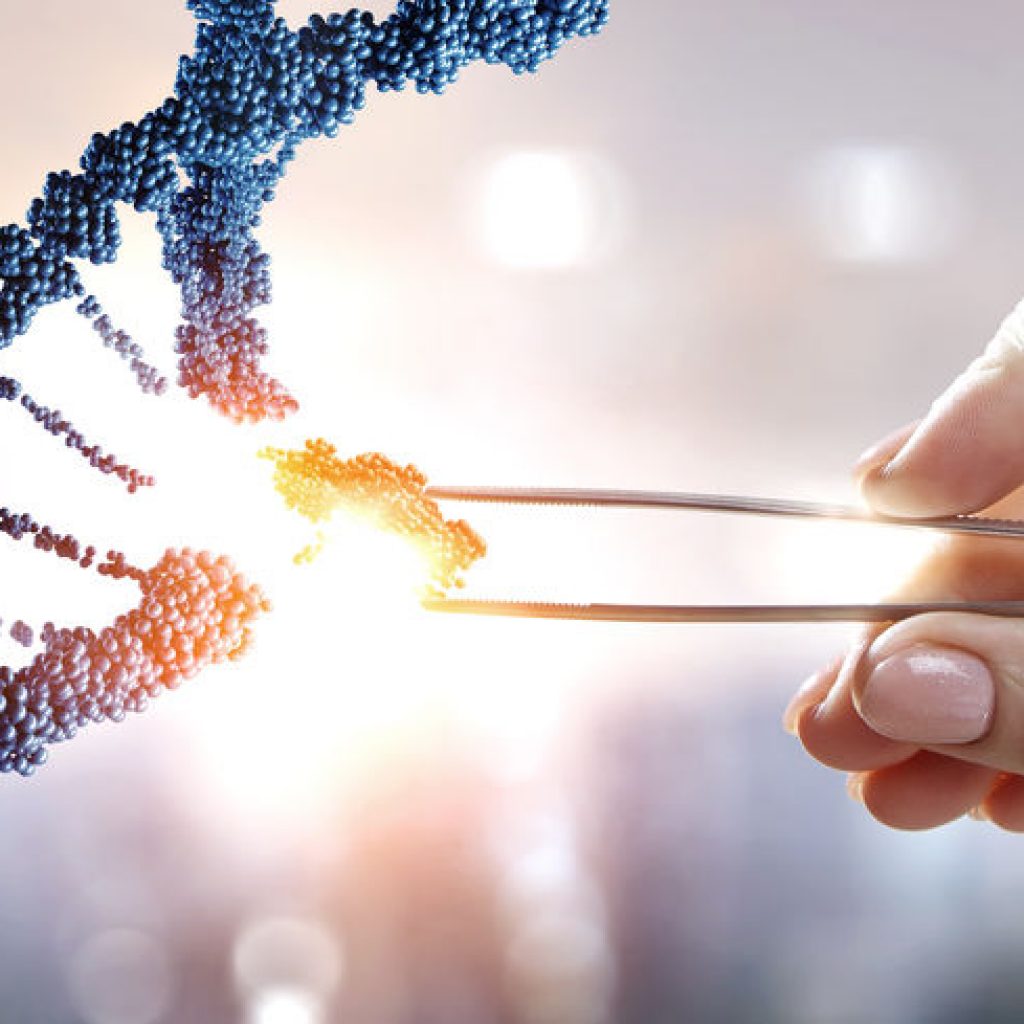NODE SMITH, ND
A gene therapy for chronic pain could offer a safer, non-addictive alternative to opioids. Researchers at the University of California San Diego developed the new therapy, which works by temporarily repressing a gene involved in sensing pain. It increased pain tolerance in mice, lowered their sensitivity to pain and provided months of pain relief without causing numbness. The researchers report their findings in a paper published in Science Translational Medicine.
The gene therapy could be used to treat a broad range of chronic pain conditions, from lower back pain to rare neuropathic pain disorders — conditions for which opioid painkillers are the current standard of care.
“What we have right now does not work,” said first author Ana Moreno, a bioengineering alumna from the UC San Diego Jacobs School of Engineering. Opioids can make people more sensitive to pain over time, leading them to rely on increasingly higher doses. “There’s a desperate need for a treatment that’s effective, long-lasting and non-addictive.”
The idea for such a treatment emerged when Moreno was a Ph.D. student in UC San Diego bioengineering professor Prashant Mali’s lab. Mali had been investigating the possibility of applying CRISPR-based gene therapy approaches to rare as well as common human diseases. Moreno’s project focused on exploring potential therapeutic avenues. One day, she came across a paper about a genetic mutation that causes humans to feel no pain. This mutation inactivates a protein in pain-transmitting neurons in the spinal cord, called NaV1.7. In individuals lacking functional NaV1.7, sensations like touching something hot or sharp do not register as pain. On the other hand, a gene mutation that leads to overexpression of NaV1.7 causes individuals to feel more pain.
When Moreno read this, it clicked. “By targeting this gene, we could alter the pain phenotype,” she said. “What’s also cool is that this gene is only involved in pain. There aren’t any severe side effects observed with this mutation.”
Non-permanent gene therapy
Moreno had been working on gene repression using the CRISPR gene editing tool as part of her dissertation. Specifically, she was working with a version of CRISPR that uses what’s called “dead” Cas9, which lacks the ability to cut DNA. Instead, it sticks to a gene target and blocks its expression.
Moreno saw an opportunity to use this approach to repress the gene that codes for NaV1.7. She points out an appeal of this approach: “It’s not cutting out any genes, so there are no permanent changes to the genome. You wouldn’t want to permanently lose the ability to feel pain,” she said. “One of the biggest concerns with CRISPR gene editing is off-target effects. Once you cut DNA, that’s it. You can’t go back. With dead Cas9, we’re not doing something irreversible.”
Mali, who is a co-senior author of the study, says that this use of dead Cas9 opens the door to using gene therapy to target common diseases and chronic ailments.
“In some common diseases, the issue is that a gene is being misexpressed. You don’t want to completely shut it down,” he said. “But if you could turn down the dose of that gene, you could bring it to a level where it is not pathogenic. That is what we are doing here. We don’t completely take away the pain phenotype, we dampen it.”
Moreno and Mali co-founded the spinoff company Navega Therapeutics to work on translating this gene therapy approach, which they developed at UC San Diego, into the clinic. They teamed up with Tony Yaksh, an expert in pain systems and a professor of anesthesiology and pharmacology at UC San Diego School of Medicine. Yaksh is a scientific advisor to Navega and co-senior author of the study.
Early lab studies
The researchers engineered a CRISPR/dead Cas9 system to target and repress the gene that codes for NaV1.7. They administered spinal injections of their system to mice with inflammatory and chemotherapy-induced pain. These mice displayed higher pain thresholds than mice that did not receive the gene therapy; they were slower to withdraw a paw from painful stimuli (heat, cold or pressure) and spent less time licking or shaking it after being hurt.
The treatment was tested at various timepoints. It was still effective after 44 weeks in the mice with inflammatory pain and 15 weeks in those with chemotherapy-induced pain. The length of duration is still being tested, researchers said, and is expected to be long-lasting. Moreover, the treated mice did not lose sensitivity or display any changes in normal motor function.
To validate their results, the researchers performed the same tests using another gene editing tool called zinc finger proteins. It’s an older technique than CRISPR, but it does the same job. Here, the researchers designed zinc fingers that similarly bind to the gene target and block expression of NaV1.7. Spinal injections of the zinc fingers in mice produced the same results as the CRISPR-dead Cas9 system.
“We were excited that both approaches worked,” Mali said. “The beauty about zinc finger proteins is that they are built on the scaffold of a human protein. The CRISPR system is a foreign protein that comes from bacteria, so it could cause an immune response. That’s why we explored zinc fingers as well, so we have an option that might be more translatable to the clinic.”
The researchers say this solution could work for a large number of chronic pain conditions arising from increased expression of NaV1.7, including diabetic polyneuropathy, erythromelalgia, sciatica and osteoarthritis. It could also provide relief for patients undergoing chemotherapy.
And due to its non-permanent effects, this therapeutic platform could address a poorly met need for a large population of patients with long-lasting (weeks to months) but reversible pain conditions, Yaksh said.
“Think of the young athlete or wounded war fighter in which the pain may resolve with wound healing,” he said. “We would not want to permanently remove the ability to sense pain in these people, especially if they have a long life expectancy. This CRISPR/dead Cas9 approach offers this population an alternative therapeutic intervention — that’s a major step in the field of pain management.”
Researchers at UC San Diego and Navega will next work on optimizing both approaches (CRISPR and zinc fingers) for targeting the human gene that codes for NaV1.7. Trials in non-human primates to test for efficacy and toxicity will follow. Researchers expect to file for an IND and to commence human clinical trials in a couple years.
This work was supported by UC San Diego Institutional Funds and the National Institutes of Health (grants R01HG009285, RO1CA222826, RO1GM123313, R43CA239940, R43NS112088, R01NS102432, R01NS099338).
Disclosure: Ana Moreno, Fernando Alemán, Prashant Mali and Tony Yaksh have a financial interest in Navega Therapeutics. The terms of these arrangements have been reviewed and approved by the University of California San Diego in accordance with its conflict of interest policies.
1. Ana M. Moreno, Fernando Alemán, Glaucilene F. Catroli, Matthew Hunt, Michael Hu, Amir Dailamy, Andrew Pla, Sarah A. Woller, Nathan Palmer, Udit Parekh, Daniella McDonald, Amanda J. Roberts, Vanessa Goodwill, Ian Dryden, Robert F. Hevner, Lauriane Delay, Gilson Gonçalves dos Santos, Tony L. Yaksh, Prashant Mali. Long-lasting analgesia via targeted in situ repression of NaV1.7 in mice. Science Translational Medicine, 2021; 13 (584): eaay9056 DOI: 10.1126/scitranslmed.aay9056

Node Smith, ND, is a naturopathic physician in Humboldt, Saskatchewan and associate editor and continuing education director for NDNR. His mission is serving relationships that support the process of transformation, and that ultimately lead to healthier people, businesses and communities. His primary therapeutic tools include counselling, homeopathy, diet and the use of cold water combined with exercise. Node considers health to be a reflection of the relationships a person or a business has with themselves, with God and with those around them. In order to cure disease and to heal, these relationships must be specifically considered. Node has worked intimately with many groups and organizations within the naturopathic profession, and helped found the non-profit, Association for Naturopathic Revitalization (ANR), which works to promote and facilitate experiential education in vitalism.





